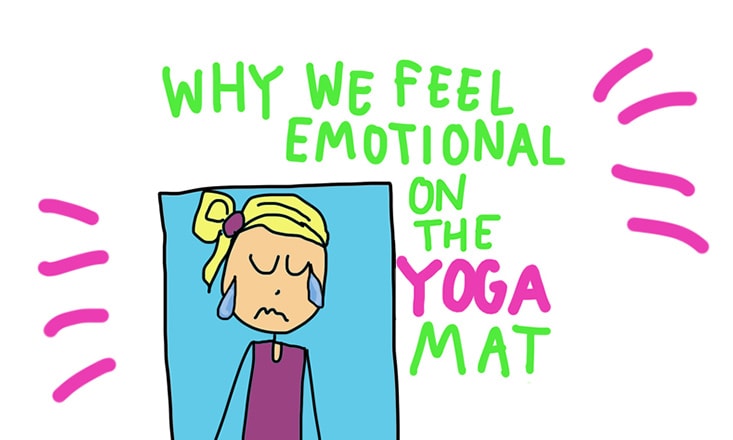The first time I felt “emotional” (read: tears) during a yoga class was sometime around Savasana and it went a little something like this:
I had absolutely NO idea what was happening and couldn’t do anything to stop it.
I’d love to say that I felt “enlightened” “emotionally unburdened” and “free” but to be honest – it completely freaked me out that I was suddenly, for no apparent reason, lying in a puddle of tears in a dark room with a bunch of strangers.
As I’ve delved deeper into my own personal practice — my own experience with yoga, its connection to our emotions, and through my journey as a yoga teacher — I have opened myself more to the powerful connection that exists between our body and our mind and the way that we can access that connection through the time we spend on our mat.
It’s often said by yoga teachers that “the hips hold a lot of our emotions” – which when you think of it in its literal terms really is rather bizarre –
So what do yoga teachers mean when they whip out this “hip-py-talk”?
The Mind, Body, and Spirit Connection
Yoga is an exploration of the connection between body, mind and spirit. The very word “yoga” is sometimes defined as “to yoke” or “to pull together/unite” – the pulling together or union of those three elements of the self.
Because of the intrinsic connection between these three things, the tension, frustration, anger, sadness, pain, happiness, love (etc.) that we hold in our minds can often be experienced through the physical body and vice versa.
If you’ve ever had trouble sleeping at night – that ‘bedtime-moment’ when a thousand thoughts suddenly start running through your head (greatest thing ever), it’s a good idea to check the tightness or tension in your jaw.
As the mind starts to buzz with all these thoughts, the physical body (in this case, the jaw) begins trying to verbalise these thoughts, but, because “sleep time” usually isn’t the right time or space to talk to anyone, we hold that tightness in our jaw — often without even realising it.
Similarly, if you’ve ever become angry or frustrated, you many notice the shoulders rising up towards the neck or the muscles in the fingers beginning to unconsciously clench.
These are very obvious and general examples – but imagine the kind of subtle tension being built up in the body over all the years of our minds being active!
The Link Between Hatha Yoga and the Mind-Body-Spirit Connection
In our Hatha (or physical yoga) practice, and as put out in the texts of the Hatha Yoga Pradipika, we are not concerned with trying to create “break-throughs” in the mind, we simply learn to control and release into the physical body through the practice of asanas (or postures).
And because of the intrinsic connection of mind, body, and spirit — the mind follows.
In a class that focuses on releasing tension and tightness, or allowing the body to soften and let go, it may be an indicator for the mind to do the same.
The release in the physical body and those quiet moments in Savasana, gives the mind the space and the time to let go of anything past or present, that it is unnecessarily and unconsciously holding on to. And yes, sometimes this is experienced through a tear or two.
The Five Koshas

The first outermost layer, Annamaya Kosha is the “foodstuff” layer. It relates to the things that make up the “matter” of the body: bones, flesh, muscles, skin, joints, ligaments etc.
And it’s clear to see how in our physical yoga practice, we start tapping into this layer by moving through a series of asanas – affecting the very “foodstuff” elements of our self.
The next layer in is the Pranamaya Kosha – which deals with the prana or life force/energy/vitality within the body, which is experienced through the breath.
In our physical yoga practice, when we move with a deep connection to the breath, we start peeling off the layers of this sheath too.
The third layer is the Manomaya Kosha – “mano” that which is composed of the mind. This is where the magic in our yoga practice begins to occur. By working through the two outermost layers (physical body and pranic body, through postures and the breath), we begin to see the layers of the manas or mind emerging.
Following these principles, we can begin to understand how yoga can elicit changes in our mental state, when we work deeply within our own body and breath- shedding those outermost layers – therefore allowing for the mind layers, the nervous system and all the emotions connected to it, to be broken open.
And, if that “hippy talk” is a bit far from your realm of belief – maybe you’ve just had a really crappy day and yoga is your safe space to have a little wallow – in which case, go right ahead – let that shit out!










